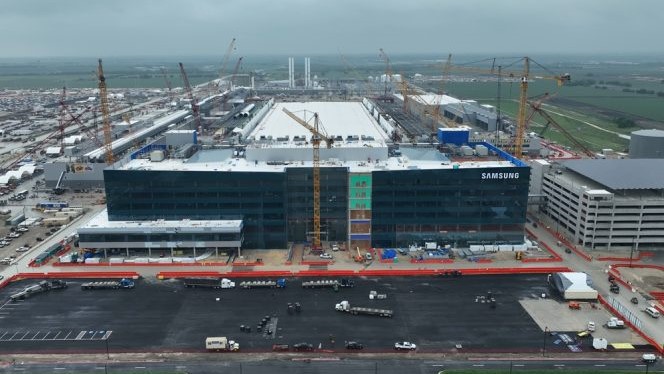Samsung to build an expansive US semiconductor ecosystem with $6.4B CHIPS subsidy
A new $6.4 billion subsidy from the US government will support the establishment of Samsung's comprehensive chip manufacturing ecosystem in Taylor, Texas.

The US government plans to grant up to $6.4 billion in direct funding to Samsung Electronics to expand its semiconductor production facility in Central Texas. This comes as part of the ongoing effort to revitalize domestic chip manufacturing, according to an announcement made Monday by the US Department of Commerce.
The funding comes from the $52-billion CHIPS and Science Act and is the third largest grant awarded under the act behind Intel and TSMC, respectively. Intel clinched $8.5 billion in grants last month and Taiwan's TSMC secured $6.6 billion last week to step up its American production.
With the additional funding, Samsung is expected to invest more than $40 billion in its US division in the coming years. This investment is 42.5% higher than its initial commitment in 2021 when Samsung said it would shell out $17 billion to construct a new semiconductor manufacturing facility.
"The chips that Samsung will be making in Texas are important components to our most advanced technologies, from artificial intelligence to high-performance computing and 5G communications," said US Secretary of Commerce Gina Raimondo in a statement.
The department pointed out that the proposed CHIPS investment in Samsung would propel Central Texas into a state-of-the-art leading-edge ecosystem, creating over 17,000 construction jobs and more than 4,500 manufacturing jobs within the next five years,
New chip manufacturing hub
Besides the expansion of its existing facility in Austin, the new subsidy will support the establishment of Samsung's comprehensive chip manufacturing ecosystem in Taylor, Texas – which the South Korean company claimed to be one of the largest foreign direct investments for a greenfield project in US history.
The new manufacturing facility in Taylor will include the construction of two logic foundry fabs focused on the mass production of 2nm and 4nm process technologies. The first foundry plant in the small municipality is scheduled to operate in 2026, and the second one is expected to be completed in 2027.
There will also be an R&D fab dedicated to development and research on technology generations ahead of nodes currently in production, and an advanced packaging facility producing 3D High Bandwidth Memory and 2.5D packaging, both of which have critical artificial intelligence applications.
According to the US Department of Commerce, the semiconductors that are designed and manufactured in this ecosystem would serve a wide variety of end markets – from communications, automotive, and defense industries to high-performance computing and artificial intelligence.
It added that with investments by Samsung and other chip firms, the US is on track to produce roughly 20% of the world’s leading-edge logic chips by 2030.
Kye Hyun Kyung, president and CEO of the device solutions division at Samsung, said the company's investment in the US goes way beyond the expansion of its production facilities.
"We’re strengthening the local semiconductor ecosystem and positioning the US as a global semiconductor manufacturing destination. Samsung will pave the way for US-made chips from design to completion, and we will do this through partnerships with our customers and suppliers across the country…our fabs will be equipped for cutting-edge process technologies and help advance the security of the US semiconductor supply chain," he added.
Building the local semiconductor talent pool
Kyung said that Samsung's plan is not just about investing in chips but also about developing the semiconductor talent pipeline in the community.
"We’re also investing in our future, which is the semiconductor talent pipeline. We’re partnering with elementary schools, high schools and colleges to create the next generation of semiconductor innovators, as well as programs that train military veterans so we can ensure we have the best people running our fabs."
Samsung has long-term partnerships with local academic institutions – such as Austin Community College, The University of Texas at Austin, Texas A&M University, Texas State Technical College, Temple College, Manor High School and Taylor High School – to train its future semiconductor workforce.
The planned $6.4 billion CHIPS subsidy also includes up to $40 million in dedicated workforce funding. Samsung hopes to leverage the robust two-year and four-year academic footprint in Texas to produce the skilled workers needed to fill the critical roles created by its latest investment.
To retain the skilled workforce necessary for its projects, Samsung is also exploring options in collaboration with the US government to build supply and defray the cost of high-quality and accessible childcare for its employees.
Read more about:
AsiaAbout the Author(s)
You May Also Like





.jpg?width=300&auto=webp&quality=80&disable=upscale)






